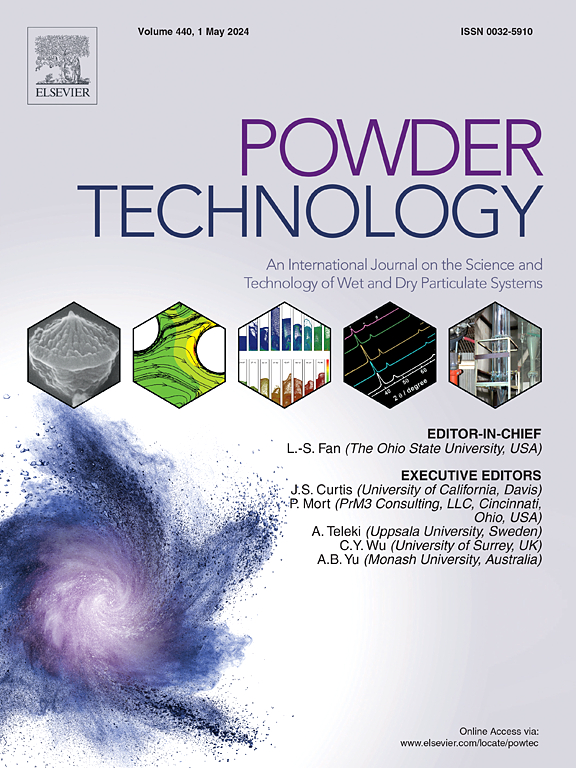机械粉末压实方程:考虑颗粒特性的影响
IF 4.5
2区 工程技术
Q2 ENGINEERING, CHEMICAL
引用次数: 0
摘要
提出了基于粘结强度和粘结数的机械粉末压实方程,将颗粒的物理性质纳入到片剂抗拉强度的预测中。该研究旨在深入了解颗粒与材料性能之间的相互作用,包括原始粒径、Sauter平均直径、表面能、杨氏模量和泊松比,以计算粘结强度和粘结数与片剂孔隙率和压实压力之间的关系。有两个拟合参数,脆性参数k和修正接触数c分别与粉末压缩后的延性倾向和接触面积有关。预测的片剂抗拉强度由两项驱动:键合数和键合强度。该模型通过表征压实片在一系列压实压力下的三种尺寸的微晶纤维素进行了测试。该框架的主要新颖之处在于,它可以提供对物理颗粒性质相互作用的机制洞察,以预测片剂强度。最终,该模型旨在为辅料选择和片剂配方开发提供指导。本文章由计算机程序翻译,如有差异,请以英文原文为准。

A mechanistic powder compaction equation: Accounting for the effects of particle properties
A mechanistic powder compaction equation is proposed to incorporate physical particle properties into the prediction of tablet tensile strength based on the bonding strength and bonding number. This investigation aims to establish insights between the interplay of particle and material properties including primary particle size, Sauter mean diameter, surface energy, Young's modulus, and Poisson's ratio to calculate the bonding strength and bonding number with tablet porosity and compaction pressure. There are two fitting parameters, brittle parameter and corrected contact number are related to powder ductility tendency and contact area after compression, respectively. The predicted tablet tensile strength is driven by two terms: bonding number and bonding strength. The model is tested with three sizes of microcrystalline cellulose by characterizing compacted tablets for a range of compaction pressures. The main novelty of this framework is that it can provide a mechanistic insight into the interplay of physical particle properties to predict tablet strength. Ultimately, this model aims to provide guidelines for excipient selection and tablet formulation development.
求助全文
通过发布文献求助,成功后即可免费获取论文全文。
去求助
来源期刊

Powder Technology
工程技术-工程:化工
CiteScore
9.90
自引率
15.40%
发文量
1047
审稿时长
46 days
期刊介绍:
Powder Technology is an International Journal on the Science and Technology of Wet and Dry Particulate Systems. Powder Technology publishes papers on all aspects of the formation of particles and their characterisation and on the study of systems containing particulate solids. No limitation is imposed on the size of the particles, which may range from nanometre scale, as in pigments or aerosols, to that of mined or quarried materials. The following list of topics is not intended to be comprehensive, but rather to indicate typical subjects which fall within the scope of the journal's interests:
Formation and synthesis of particles by precipitation and other methods.
Modification of particles by agglomeration, coating, comminution and attrition.
Characterisation of the size, shape, surface area, pore structure and strength of particles and agglomerates (including the origins and effects of inter particle forces).
Packing, failure, flow and permeability of assemblies of particles.
Particle-particle interactions and suspension rheology.
Handling and processing operations such as slurry flow, fluidization, pneumatic conveying.
Interactions between particles and their environment, including delivery of particulate products to the body.
Applications of particle technology in production of pharmaceuticals, chemicals, foods, pigments, structural, and functional materials and in environmental and energy related matters.
For materials-oriented contributions we are looking for articles revealing the effect of particle/powder characteristics (size, morphology and composition, in that order) on material performance or functionality and, ideally, comparison to any industrial standard.
 求助内容:
求助内容: 应助结果提醒方式:
应助结果提醒方式:


